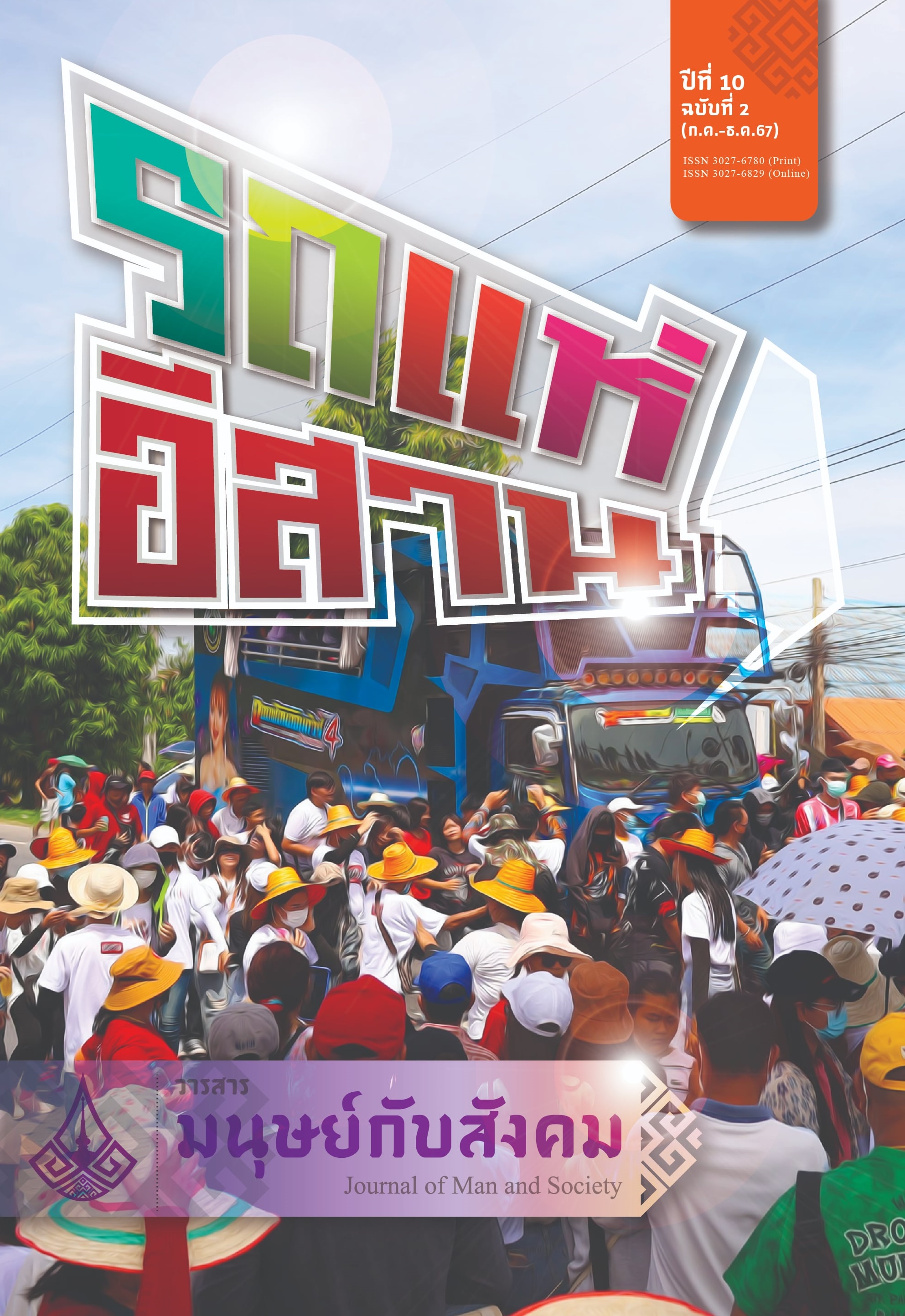Design and Development of an Experiential Learning Activities Package to Promote Reading Literacy for Upper Primary School Students
Main Article Content
Abstract
This research aimed to 1) analyze the experiences and essential needs of Thai language teachers and upper primary school students for developing reading literacy; 2) design and develop a set of experience-based learning activities to enhance reading skills in upper primary school students; and 3) examine the outcomes of implementing these activities. The research was divided into three phases: analysis and exploration, design and development, and evaluation and reflection. The research used tools developed through a design thinking process. In Phase 1, design tools 01 - 16 were used; in Phase 2, design tools 17 - 18 were used; and in Phase 3, design tools 19 - 20 were used. The research participants are teachers and students from schools in Udon Thani Province. The findings revealed that: 1) teachers’ experience, who primarily rely on textbook lectures and lack instructional materials, needs learning activities, online media, or games to aid their teaching. Similarly, students’ experience of being taught through lectures and being burdened with excessive assignments also expresses a desire for engaging enhancements such as games or activities incorporating online media. 2) The results of the prototype’s learning activities developed from this research include plans, activity sheets, and pre- and post-learning assessments—nine sets of activities. The evaluation results from experts ranged between 0.60 - 1.00. 3) The results from of these learning activities demonstrated that upper primary school students’ reading intelligence scores improved significantly-by 0.5 points-after participation.
Article Details

This work is licensed under a Creative Commons Attribution-NonCommercial-NoDerivatives 4.0 International License.
เนื้อหาและข้อมูลที่ตีพิมพ์ลงในวารสารมนุษย์กับสังคม ถือเป็นข้อคิดเห็นและความรับผิดชอบโดยตรงของผู้เขียนซึ่งกองบรรณาธิการวารสารไม่จำเป็นต้องเห็นด้วยหรือร่วมรับผิดชอบใดๆ
บทความ ข้อมูล เนื้อหา รูปภาพ ฯลฯ ที่ได้รับการตีพิมพ์ในวารสารมนุษย์กับสังคม ถือเป็นลิขสิทธิ์ของวารสาร หากบุคคลหรือหน่วยงานใดต้องการนำทั้งหมดหรือส่วนหนึ่งส่วนใดไปเผยแพร่ต่อต้องอ้างอิงวาสาร
References
กระทรวงศึกษาธิการ. (2551). หลักสูตรแกนกลางการศึกษาขั้นพื้นฐานพุทธศักราช 2551. กระทรวงศึกษาธิการ.
กรวิชญ์ โสภา. (2566). การพัฒนาชุดกิจกรรมกระบวนการคิดเชิงออกแบบ (DESIGN THINKING) เพื่อพัฒนาความสามารถด้านการออกแบบเชิงวิศวกรรม. วารสารศึกษาศาสตร์ มหาวิทยาลัยบูรพา, 34(1), 76-87.
ปาริตา สายนันไชย และสิริพัชร์ เจษฎาวิโรจน์. (2567). การเปรียบเทียบผลสัมฤทธิ์ทางการเรียนก่อนเรียนและหลังเรียน ของนักเรียนชั้นมัธยมศึกษาปีที่ 2 ด้วยการจัดการเรียนการสอน เรื่อง ชนิดของคำ โดยใช้หนังสือแบบฝึกหัด. วารสารวิชาการและวิจัย, 14(1), 295 – 309.
สำนักงานนโยบายและแผนการศึกษาขั้นพื้นฐาน. (2566, 21 พฤษภาคม). สถิติข้อมูลทางการศึกษา. http://www.bopp.go.th.
สถาบันส่งเสริมการสอนวิทยาศาสตร์และเทคโนโลยี (สสวท). (2566, 6 ธันวาคม). PISA THAILAND. https://www.pisathailand.ipst.ac.th.
อาธิติยา งอกสิน. (2564). ผลการใช้ชุดกิจกรรมการเรียนรู้ตามวิธีสอนแบบ MIA เพื่อส่งเสริมทักษะการอ่านภาษาอังกฤษเพื่อความเข้าใจ และกลยุทธ์การอ่านสำหรับนักเรียนชั้นมัธยมศึกษาปีที่ 1 [วิทยานิพนธ์ปริญญามหาบัณฑิต, มหาวิทยาลัยศิลปากร]. Silpakorn University Repository (SURE). https://sure.su.ac.th/xmlui/handle/123456789
อภิสิทธิ์ ไล่สัตรูไกล. (2557). คู่มือการออกแบบบริการ. ศูนย์สร้างสรรค์งานออกแบบ (TCDC). https://resource.tcdc.or.th/ebook/TCDC-Service-Design-Workbook.pdf
Krejcie, R.V., & Morgan, D. W. (1970). Determining sample size for research activities. Educational and Psychological Measurement, 30(3), 607–610.
Kolb,D.A. (2005). Experiential Learning. Experience as the source of learning and development: Prentice-Hall, Inc, Englewood Cliffs, N.J.

